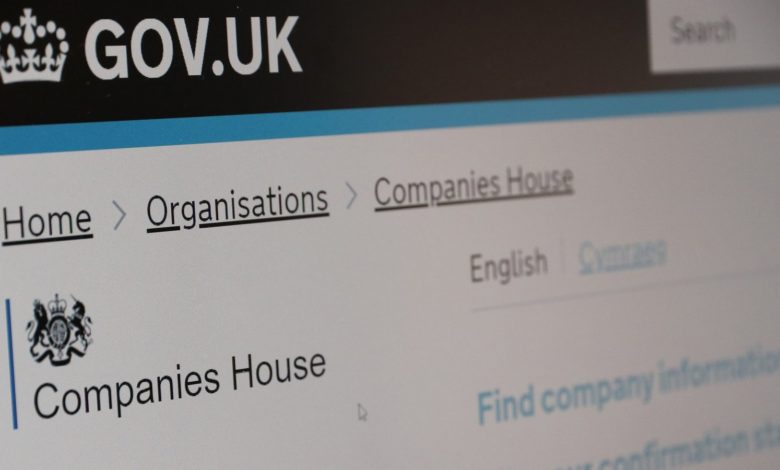A Comprehensive Overview to the Compulsory Strike Off Procedure in Corporate Governance
The obligatory strike off procedure, a vital element in corporate administration, offers as a device to impose compliance and preserve the stability of the service environment. As organizations evolve and situations adjustment, the requirement to strike off a business may develop for different factors.
Reasons for Compulsory Strike Off
There are a number of key factors that might prompt the initiation of an obligatory strike off treatment for a firm. Non-compliance with regulatory requirements can increase concerns regarding the company's procedures and economic health, leading to the decision to strike off the company from the register.
Furthermore, business that have discontinued trading or are no much longer accomplishing any company activities may also deal with obligatory strike off. This might be as a result of bankruptcy, mergings, or just a choice to wind up the company. In such instances, keeping the firm on the register would certainly offer no purpose and could potentially create complication amongst stakeholders.
Inevitably, the need of an obligatory strike off in corporate administration develops when a business is no longer operating in accordance with the law or has actually ended up being inoperative, necessitating its elimination from the official documents.
Lawful Ramifications and Dangers
Offered the scenarios that motivate a required strike off in corporate administration, it is necessary to understand the lawful effects and dangers associated with such activities. When a business is struck off the main register, it stops to exist as a lawful entity.
In addition, there are legal consequences for individuals associated with the monitoring of a business that has been by force struck off. They may be invalidated from working as directors in the future, face fines, and even imprisonment if misbehavior or fraudulent activities are discovered. In addition, the reputational damage from a compulsory strike off can have long lasting results on people and their ability to engage in future service ventures. Recognizing these legal ramifications and threats is important for all stakeholders involved in the business administration process to browse possible pitfalls and guarantee conformity with the regulation.
Action In the Strike Off Process
Launching the required strike off process in corporate administration includes a series of prescribed steps described by regulative authorities. The primary step normally needs the firm to send a formal application or alert to the pertinent government company or registrar signaling its intent to be struck off the main register. Consequently, the company is often called for to work out any outstanding responsibilities, financial debts, or taxes to make certain compliance with regulatory demands.
As soon as webpage the preliminary paperwork is sent and economic obligations are fulfilled, the regulative body will certainly publish a notification in a comparable publication or the official gazette to educate stakeholders regarding the upcoming strike off. This notice acts as a final chance for any kind of interested parties to increase arguments or present legitimate reasons why the firm should not be dissolved.
Adhering to the publication of the notice, the regulatory authority will continue with the strike off procedure if no significant objections or challenges emerge. The company will after that be formally dissolved, and its name will be eliminated from the register, properly marking the conclusion of the required strike off procedure in corporate governance.
Papers Needed for Strike Off
In conformity with regulatory standards, particular paperwork must be offered to assist in the strike off process in company governance. blog The required files commonly consist of an official application for strike off, which requires to be finished accurately and submitted to the relevant regulatory authority. Additionally, financial statements, such as the business's latest annual report, must be included to ensure that all financial commitments have actually been resolved prior to starting the strike off procedure. A declaration of solvency or a declaration confirming that the firm has no exceptional responsibilities is usually mandated to show that the entity can be liquified without causing injury to its financial institutions. Furthermore, any kind of essential authorizations from investors or board participants need to be recorded and enclosed with the application. It is necessary to make certain that all the requisite documentation is carefully prepared and sent according to the suggested guidelines to accelerate the strike off process effectively. Failure to supply the essential documents might lead to hold-ups or complications in the dissolution of the company.
Post-Strike Off Factors To Consider and responsibilities

Another essential post-strike off factor to consider is the potential for the business to be recovered to the register. If there is a demand to revitalize the company after strike off, the process for restoration must be very carefully complied with to make sure compliance with lawful demands.
Final Thought

There are a number of essential reasons that may motivate the initiation of an obligatory strike off procedure for a business. Non-compliance with governing demands can raise worries concerning the business's procedures and financial health and wellness, leading to the choice to strike off the business from the register.
Additionally, business that have actually ceased trading or are no longer lugging out any company tasks might also face obligatory strike off. If there is a need to restore the business after strike off, the process for repair must be meticulously followed to make sure conformity with legal requirements.In final thought, the required strike off treatment in corporate administration serves as a required device to remove defunct business from the register.